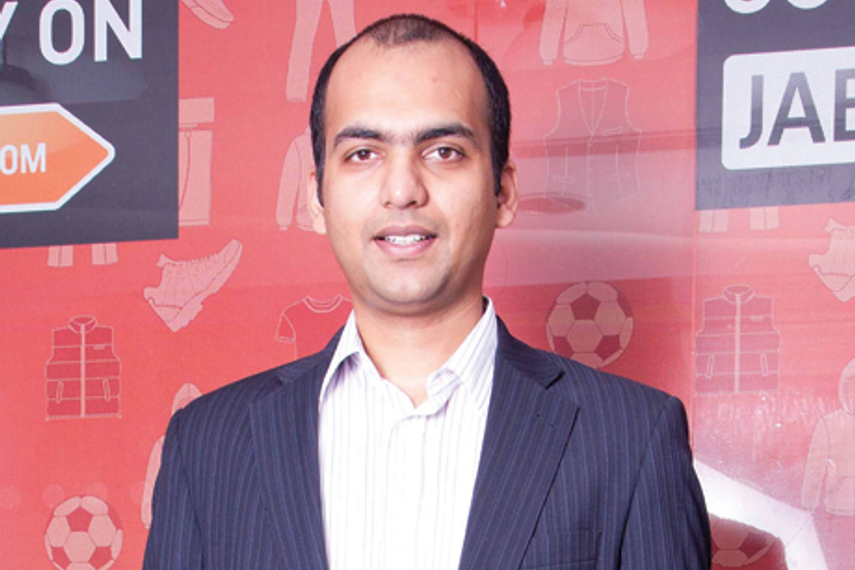
How has Jabong grown over the past 22 months?
Jabong started operating in January 2012. It has grown phenomenally in terms of number of brands, number of SKUs, sales, traffic and fan following on Facebook. We have grown faster than anybody in the history of Indian e-commerce. We believe that we are the largest in the fashion and lifestyle category.
If you look at ComScore numbers, the industry is growing at 150 to 200 per cent year-on-year. Last year, it grew by 300 per cent; this year it is around 150 per cent. And we (Jabong) are growing way better than that.
E-commerce is seeing a spurt of newer players. What is Jabong’s strategy to stay ahead of the curve?
Our strategy is two-fold. One is the assortment that we provide. We recently crossed a big threshold and a milestone that we had set for ourselves, which was to have one lakh unique products live on our site. By unique, I mean if a shoe is available in various colours, I count each colour as one SKU. Nobody else in India can provide that much of assortment or that much of choice in fashion and lifestyle, which includes regular brands, small local brands that are otherwise unavailable online, international brands that are unavailable at any other place.
Our next biggest competitor has 40,000 to 50,000 SKUs. Many brands are establishing shop-in-shop on our portal - like Nike. When we speak to CEOs of these international brands, they say that Jabong contributes large single digit to their revenues. Other brands say that we are contributing 10 to 15 per cent.
There are many international brands that are exclusively available at Jabong. Last week, we launched Crocs at Jabong - an international brand that is available online only on Jabong. The people from smaller towns are also travelling, and watching same kind of programmes – now where do they buy these brands? To a smaller city consumer, it is the assortment and accessibility.
Second is customer service. For the first-time online buyer, there is an apprehension. To address this, we focused a lot on customer service. We started our own online logistics network and we have it now in about 60 cities, and we are expanding rapidly. Six months back, this number would have been close to 30. We have an open-box policy, which we do not advertise, whereby a Jabong delivery person would tell the customer that they could open the box, and check the content ordered and pay only when they are satisfied. If not, they can return it there and then.
Other parts include express delivery. At Jabong, because of in-house logistics network, we are able to provide express delivery to all our customers without charging extra for it. In the top 10 metros, we are able to provide next day delivery almost 90 per cent of the time. In next 20 to 25 cities, we take two days. In smaller cities, it may vary between two to four days. For bulkier pieces, the lead time would be much higher.
Jabong has an assortment of nationally available international brands, local brands and exclusive international brands. What is the percentage contribution of each to sales?
When we started out, 70 to 80 per cent was the large international brands that you could also buy from an offline store. We focused on affordable, regular fashion.
Over time, we realised that there were large number of local brands, which were selling good quality products and we identified a host of such brands in Delhi, Mumbai, Bengaluru. Some of them are exclusive to us. Once we captured that market, it became 50:50 and later more dominant. We were also talking to international brands saying that we can help them establish in India, and help them scale up through the online portal. Some of these brands were present in India through an Indian distributor; some through a JV partner and some were not even present. These are not Puma and Adidas but Desigual, Crocs kind of brands. International brands would form a much smaller portion but is growing fast.
In terms of revenue, we find males are more brand conscious and would buy particular branded stuff that they are used to buying, and are largely skewed towards international brands present in India. Females are more conscious about style and assortment. For them, smaller Indian brands contribute significant portion of revenue.
Jabong has worked with two ad agencies in the past. However, the recent ‘Robbery’ TVC was created in-house. Are you looking at enlisting an ad agency?
When we launched Jabong, we worked with Mumbai-based agency called Salt, which did our first two creatives. For four to five months, we were working with Draftfcb-Ulka which worked on the campaign ‘Fashion nikla, mann fisla’. Right now, we are not working with any creative agency. We believe we have a good team in-house. While we are thankful for what they did for our brand, there were few philosophical differences in the way we wanted to manage the brand. We might look for another agency but we are not in a hurry.
How do you measure the response of various campaigns?
Each campaign has a different measure. The single biggest thing that we look for in a pure offline or a brand-building campaign is how our brand awareness and the affinity to buy is growing. There will also be some co-relation with traffic, transition, and search, but the bigger objective is to build the brand.
We also see how our search volume is going up - we try and quantify that part. Obviously, it will not be 100 per cent accurate. For campaigns like ‘Gear-up Buddies’ or where we curate our collection for ‘Yeh Jawani hai Deewani’, ‘Bhaag Milkha Bhaag’, we measure the campaigns in two or three ways. It does not impact your brand scores significantly because these campaigns are typically run digitally and not on offline media. We see the kind of engagement level that we are able to drive on the social media, we measure it from a PR perspective. We see the click-through rate on these merchandise; the sell-through rate before and after.
There are campaigns on social media that are engagement-led. For instance, we launched a series of six humorous videos during Diwali just to create buzz and create virality within social media. Over there, the biggest measure is how viral these campaigns go.
And then there are sales-push campaigns, which could be around any kind of offer or discount that we are promoting.
How does Jabong decide its marketing budget?
We are a retail company. We are a competitor to online and offline retailers. I am spending money to acquire a customer. Now, the customer may pay off this money in the first purchase or may not. For a retailer, it is important to understand the life cycle of a customer. The money I am spending on acquiring a customer should be lesser than the money I am earning from him or her, otherwise it doesn’t make sense. Hence, I do the math for each of my marketing channels depending on customers acquired and money earned, and whether it will pay off or not. If the customers are not profitable for us, we are wasting money.
What is the percentage share of each media vehicle in marketing mix.
Being an online company, our dominant spends are on digital. Every now and then, we keep doing some TV campaign, depending on how strong we see our brand awareness is. For the first half of this year, our brand awareness scores were very high and we were getting the highest possible traffic in India. Hence, we waited to launch the ‘robbery’ commercial in September since we were launching a new collection. TV takes a substantial amount of money but on other offline mediums like OOH, the spends are not that high. We continue to invest a lot more in online than offline.
We came up with our magazines, and three lookbooks. We went to different corporate houses and corporate parks in Delhi, Kolkata, Pune, Bengaluru and Chennai to reach our TG – the young, working person, internet-savvy, who is comfortable shopping online. May be one day we will launch our magazine which will be sold on stands.
Is sale and discount the best way to attract consumers to shop online?
I won’t deny that it is one of the ways but it is not the only way.
Unless there is a huge price difference, the consumer will always for a site that he trusts or where he had a good experience.
Price is not a differentiator; it is the service and assortment.
According to Technopak’s study ‘E-tailing in India: Unlocking the Potential’, brick and mortar stores which make up 93 per cent of the total market. Corporatised brick and mortar retail caters to nearly 7 per cent, while e-tailing’s share is only 0.1 per cent. What are the factors hampering growth?
In India, the number of cities that organised offline retail covers is 20 to 25. If you look at online, I agree it is very miniscule, but it covers 500 to 800 cities. My hypothesis is that offline organised retail will not be able to reach places like Churu or Rampur, even in the next 20 to 30 years. These are the places where online retail has already reached. Yes, it is extremely small but the potential is huge just by the sheer reach we have.
There are three parts to it. About 140-150 million people are online in India. In the next three to five, it is supposed to grow to 400 according to various studies. While the pool of people online is growing, so is share of people who are shopping online. The number of people who are shopping online is close to 11 to 12 per cent right now. This number is supposed to grow to 25 to 30 per cent in next three to five years. This is what happened in China and the US. I hope this is what happens in India. Convenience, accessibility and availability will boost online shopping.
Isn’t loyalty an issue still, especially when it comes to price-sensitive consumer shopping online?
Stickiness of a customer is very important. If is realise that the customer isn’t loyal, then I need to recover the cost of acquisition in the first purchase itself. There are three important levers to it: quality of service, shopping experience, and targeted messaging.
We are planning to launch our loyalty programme, which will be another lever to build stickiness among consumers. Recently, during Diwali, we added a gift-wrapping feature for a nominal fee. We keep doing such things to enhance loyalty. This will again be promoted close to Christmas and New Year.
Challenges that still exist for an e-retailer…
Infrastructure continues to be a big issue. We service over 10,000 pin codes when the overall number of pin codes is over 25,000. For online shopping to grow and help us scale up, internet speed and accessibility has to be way faster than what it is now. There still exists apprehension about people in smaller cities about online shopping, which we are trying to tackle with our service.
With Jabong World –an initiative that hasn’t been communicated much about, are you looking at expanding internationally?
Not aggressively, because India in itself is such a big market. If you can do it well in India that has a huge target of youth population, you can create a very big company. For instance, Alibaba in China is so huge that it is supposedly bigger than Amazon put together across the world. Jabong World is a small experiment that we are running on the sidelines.
There are a large number of Indian consumers predominantly living in Singapore, Middle East, and south East Asia, who know of Jabong and wanted to shop on Jabong. But we did not do international shipping or accept international credit cards. So, we created another replica of Jabong for these consumers. We do not promote it aggressively and it is purely through word-of-mouth that people come to know about it. The core bread and butter for us is Jabong, and not Jabong World.
What is the focus area for Jabong right now?
Getting the right product to consumer at right price and time is the most important thing. We will continue to build our assortment. We wish to build such a huge assortment that no one can even think of competing with us. Our next competitor is not even half-way. We wish to further widen this gap. We are aggressively adding more brands and SKUs.
Has Jabong reached break-even?
We are very close to profitability. We can break-even right now but it is a question of how I focus on growth and profitability together. Can I cut down all my expenses and capex that I am incurring? I can and become profitable as of today. That is not a challenge; but will also hamper our growth.
What we continuously work on month-on-month basis is: without disturbing our growth, can we become more profitable? Every month we need to identify the excess expenses or any area where we can innovate and improvise and move towards profitability. We have made significant improvements quarter-on-quarter. In India, the market is growing so fast, and we are growing faster than that. So while we are maintaining our growth and eating into market share, we should move towards profitability.






.jpeg&h=268&w=401&q=100&v=20250320&c=1)
.png&h=268&w=401&q=100&v=20250320&c=1)
.png&h=268&w=401&q=100&v=20250320&c=1)

